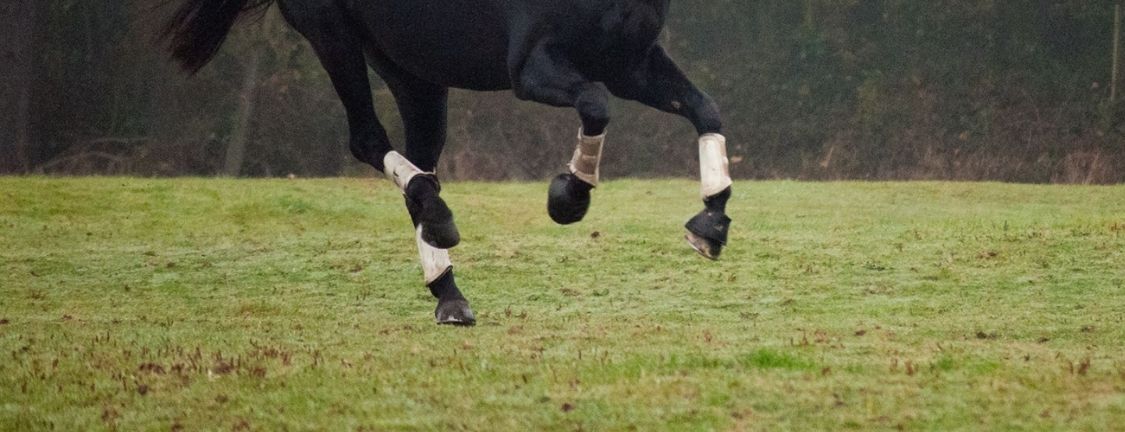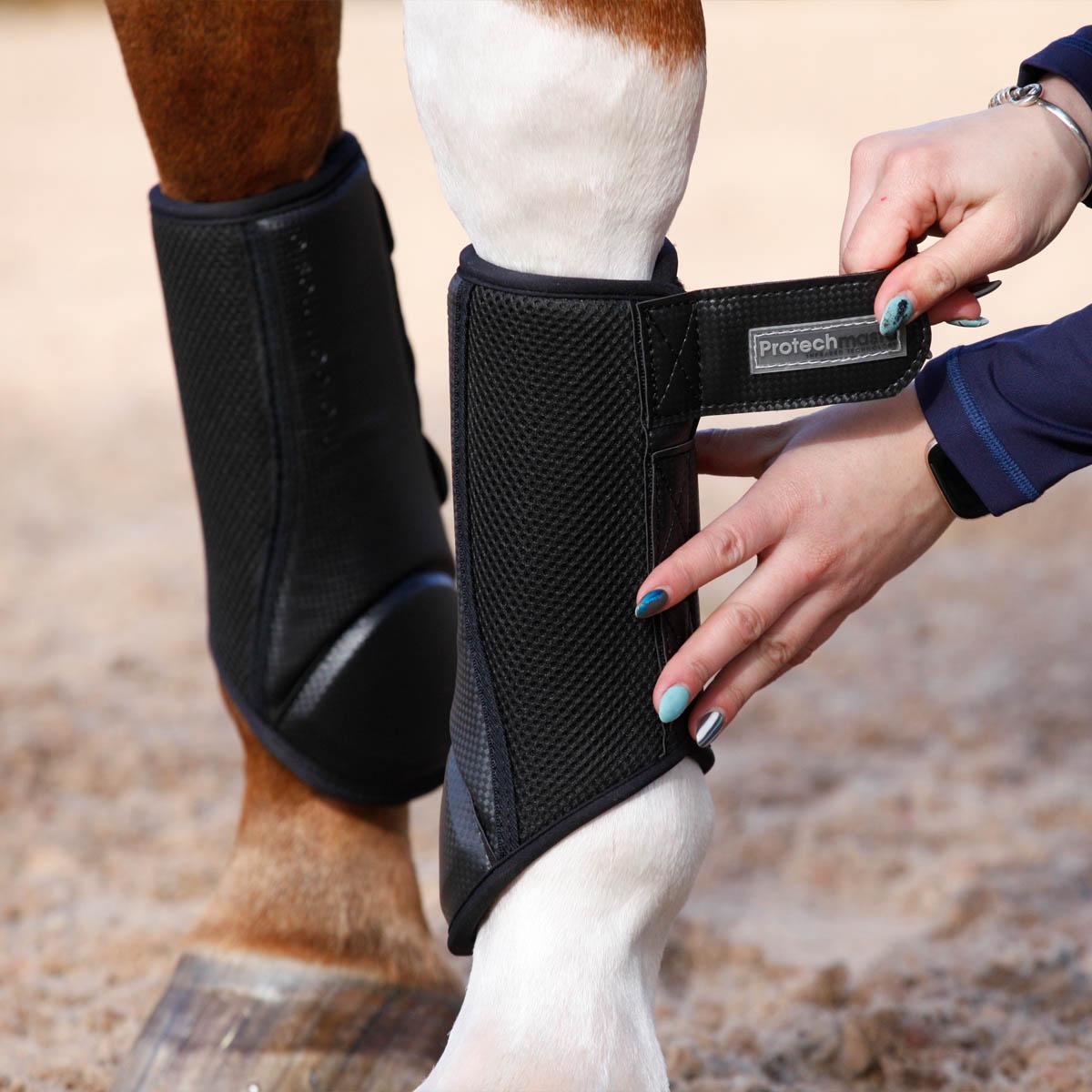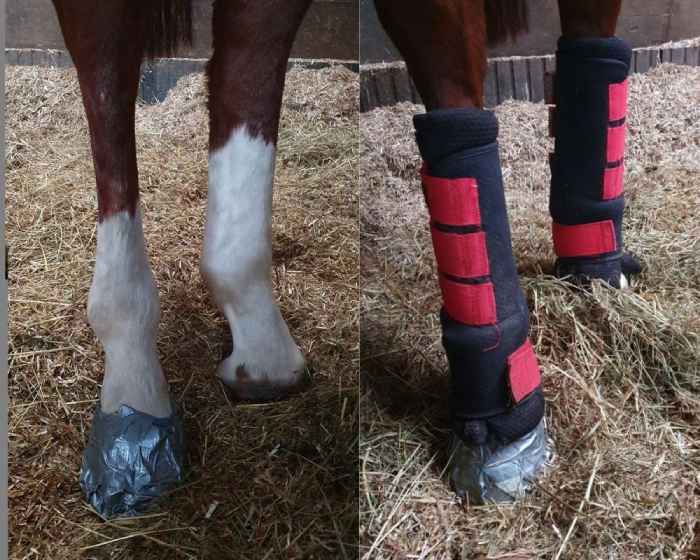
We caught up with Brian Reed from Rainbow Equine Hospital for an overview on windgalls in horses. We were keen to know some of the basic do’s and don’ts when it comes to managing, treating and even preventing windgalls in horses.
What are windgalls?
Medically they are tenosynovitis of the digital flexor tendon sheath, in layman’s terms, they are an increased amount of fluid in a tendon sheath in the leg at the back of the fetlock. They can be soft or hard (depending upon how much fluid is in the sheath) and can be big or small.
What are the early symptoms of windgalls?
Look for a soft or a hard fluid-filled swelling on the back of the leg. You should be able to feel them and if you know your horse well enough, you will see them too. It’s good practice to run your hands down your horse’s legs twice a day so you get to know what is normal and what’s not.
Are some horses more prone to developing windgalls than others?
There isn’t any evidence to suggest this. However, horses that are in hard work or older competition horses are more likely to develop windgalls. Brian explains that horses who have a very straight hind limb conformation tend to be more prone to developing windgalls. Also, if your horse has suffered a leg injury in the past, they could well be prone to the condition due to previous trauma in the area.
How can you prevent windgalls?
Windgalls are signs of a wear and tear issue, so ongoing good management of your horse and its limbs is essential. If the horse has been in hard work, then bandaging or using therapy leg wraps overnight can help with their recovery. Complete prevention is tricky and there isn’t a simple answer, to reduce the chances of windgalls developing down the line, varying the type of work your horse does is a good idea. Different ground conditions and surfaces will help and try not to repeat the same work over and over again (for example consistently performing 20-meter circles in the school, seven days a week is not a good idea). Too much of anything can be bad for your horse’s legs and be sure to work at the correct level for your horse.
Brian also recommends putting leg protection on your horse if they're in hard work. "This will help prevent against unwanted knocks and bangs which could lead to swelling in the lower limbs. A good, secure fitting boot with breathability is ideal".

The Protechmasta Schooling boots (as pictured above) use a soft naturalistic ceramic infused lining against the horse's skin, this emits a safe form of FIR (Far Infrared radiation) which is a natural process and is scientifically proven to gently and safely assist blood circulation. Helping to support healthy joints, soft tissue, maintain healthy blood flow, ease muscle tension, support recovery and aid in helping keep structures and functions sound. The lining is teamed up with a layer of neoprene and 3D air mesh, this encourages airflow and prevents unwanted heat and sweat build-up, keeping the legs cool during work.
Good trimming or shoeing from your farrier also plays an important part in leg health management. After making this point Brian stresses again the importance of varying the work your horse does – “don’t always ride in the school - hack out if it’s safe to do so if not then long rein around the fields or do some in-hand work”. A solid mixture of road work, grass hacking, time in the arena, and time in the field grazing helps keep your horse’s routine varied.
If you notice swelling and/or heat in your horse’s leg, then rest your horse the following day and use some cold treatment on the area. If your horse is lame, then you should call the vet as soon as possible. Early treatment is often the best form of preventing long-term limb issues.
How can Protechmasta help reduce leg swelling, a review from One Club member Georgie:
"I just love the Protechmasta products! We're on day 10 of box rest trying to drain a chronic abscess, he's improving day by day and I just wanted to get in touch to let you know how impressed I have been with the Protech leg wraps. He's 22 and can get puffy legs when stabled, normally he lives out 24/7 (with access to a shelter) so he can keep moving and not seize up, but obviously, due to his abscess, he's needed confinement. And we're now 10 days into stable confinement and there's no swelling in sight in either hind leg! A friend recommended we try these as soon as we heard he would need to be in and I'm so glad we got them.
They're just awesome, our vet was super impressed too and he was expecting to see some swelling in the hind legs when he came out to check his hoof. He also seems quite relaxed about being in too which we're surprised about and he's used to being 'free'! So seems the Protechmasta wraps are keeping his legs in tip-top condition and keeping his body relaxed too! You can see from the picture I've sent in that there is no swelling in his hind legs at all!
He's 16.1 and wears a full, I just bought a spare pair of liners so we can wash them but not interrupt him wearing the wraps as he's had them on 24/7 while he's been on box rest. We've also bought a pair of the Protechmasta schooling boots to put on him while he's turned out so he can benefit from Protechmasta FIR technology 24/7!"
Georgie and Westy xx

About Brian Reed:
Brian was brought up in the Scottish Borders in a family with a strong veterinary background - he is the 4th generation to take up the profession. He graduated from Glasgow University Veterinary School in 2003 and after a brief spell working for his father’s practice, he moved to a large farm animal and equine practice on Teesside. Brian moved to Rainbow Equine in 2008 to pursue his passion for equine practice, specifically reproduction, lameness investigation and pre-purchase examinations. Brian gained the RCVS certificate in equine practice in 2010 and became a Director of Rainbow Equine Hospital in 2015. Brian is an FEI Permitted Treating Vet and has provided veterinary services at many national and international Eventing and Dressage competitions. He is also an Official Veterinarian (OV), enabling him to perform equine export examinations and certification. Brian leads the breeding services at Rainbow and enjoys working with performance horses. Rainbow Equine Hospital is the largest fully-equipped RCVS Tier 3 Equine Referral Hospital in the North East of England. Rainbow offers advanced diagnostic and surgical techniques in state-of-the-art facilities and is staffed with progressive specialists in equine soft-tissue and orthopaedic surgery, internal medicine, and diagnostic imaging.
